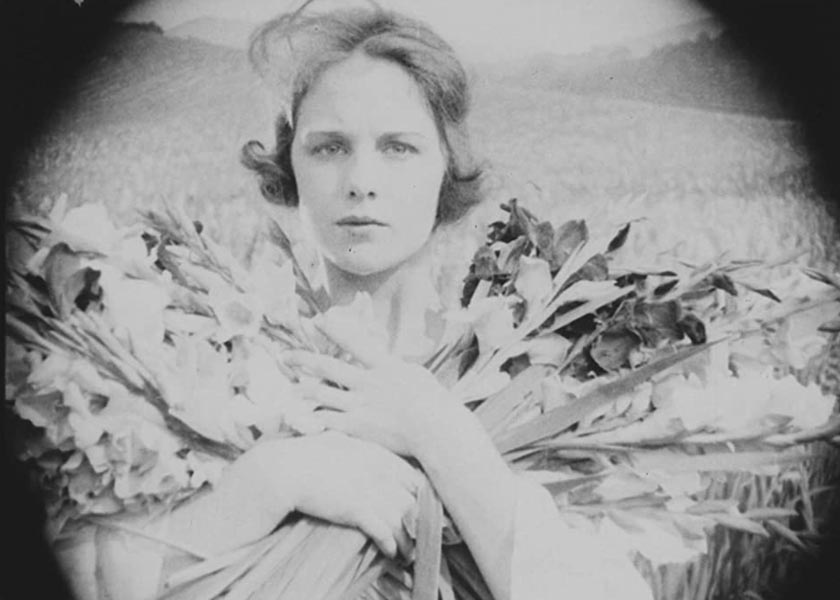Synopsis
Charlotte Marlin (Mason) is a simple country girl who goes to the city (New London, Connecticut!) to live with her rich, worldly cousin (Fair) so they can attend high school together. Deciding that she isn’t as pretty as her cousin (she’s actually much better looking), Charlotte sets herself three goals in life: 1) to be liked by everyone, 2) to become famous, and 3) to marry a millionaire. With her warm personality and natural friendliness she easily accomplishes her first goal and is universally liked. To become famous she cultivates her, perhaps unlikely, affinity for golf. Charlotte practices diligently and becomes highly proficient in the game. She enters a tournament with a well-known professional golfer and wins, thus earning headlines in the local newspapers and gaining the fame she craves. Having realized her first two goals, she reconsiders the third and, finding it unworthy, settles for marriage to the poor boy (McKee) who has loved her since they were high school sweethearts.
Discussion
The Apple Tree Girl is a charming, (mostly) rural romance notable for the performance of star Shirley Mason, Alan Crosland’s direction, and the cinematography of Philip Tannura.
Shirley Mason (1900-1979) began in films as a child in 1910 under her birth name, Leonie Flugrath. She became Shirley Mason and graduated to starring adult roles in 1917, the year of The Apple Tree Girl. She retained her status as a leading lady until the end of the silent era, when she retired from the screen. Between 1920 and 1925 she was under contract to the Fox Film Corporation. Mason was one of that studio’s three top box office stars, the other two being Tom Mix and Buck Jones. Sadly, the negatives of all but one of her 32 Fox features were destroyed in the 1937 fire that ravaged that studio’s library.
The reasons for Shirley Mason’s enduring popularity are apparent from a viewing of The Apple Tree Girl. She was a natural. She was able, like Garbo, to pour herself into the camera. While Garbo projected mystery and allure, Mason radiated warmth and affability. She was, in addition, highly photogenic; her face registered beautifully from any angle. Her acting was subtle, instinctive, and unaffected, well ahead of the norm for 1917. Given her abundant talent, it’s odd that Mason didn’t become a superstar like Mary Pickford or Joan Crawford. Perhaps she lacked the drive and ambition of those ladies and was content to play characters similar to Charlotte Marlin for the rest of her career. Like Garbo, and unlike Pickford and Crawford, Mason left the screen at the top of her game.
Alan Crosland (1894-1936) is mostly remembered (if he is remembered at all) as the director of The Jazz Singer (1927), the first talking feature film. He was just starting out in 1917. Crosland had a successful, if unremarkable, run in the pre-sound era. Perhaps his most notable silents are the three he directed for Warner Brothers featuring John Barrymore, the studio’s biggest star not named Rin Tin Tin: Don Juan (1926), When A Man Loves (1927), and The Beloved Rogue (1927). After The Jazz Singer, Crosland’s career went into steep decline. At the time of his tragic death as the result of an automobile accident he had been relegated to directing mostly B-level features.
Greatly adding to the quality of The Apple Tree Girl is the outdoor photography of Philip Tannura (1897-1973), in which rural Connecticut is made to resemble a sort of earthly paradise. Long vistas of peaceful valleys reveal sleepy villages and rustic farm houses. Cattle, horses and sheep graze in verdant meadows. How pleasant it is to see pastoral New England as it existed more than a century ago. Cinematographer Tannura, like director Crosland, was just starting in 1917. In fact, The Apple Tree Girl is one of his first credits. Tannura’s career extended into the 1960’s; after 1950 he worked mostly in television, with a long run on The George Burns and Gracie Allen Show. Tanurra may have been a journeyman, with few top-level films to his credit, yet his location work on The Apple Tree Girl would do credit to any of his more famous colleagues.

